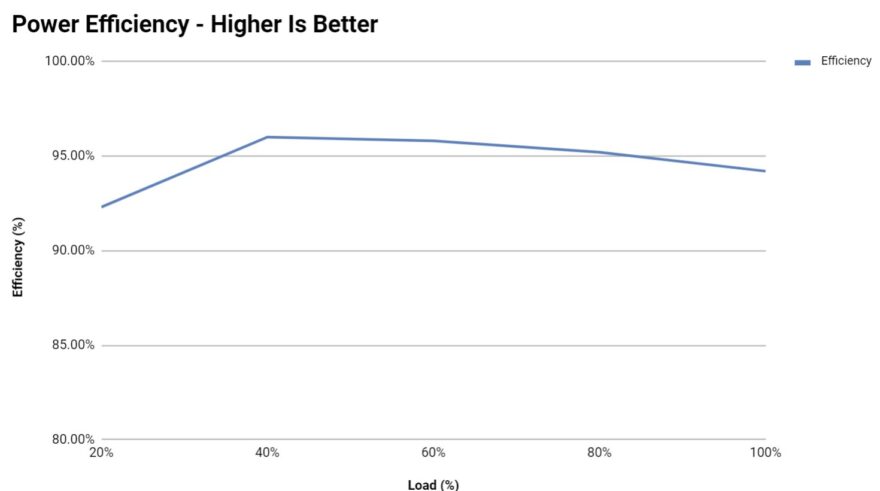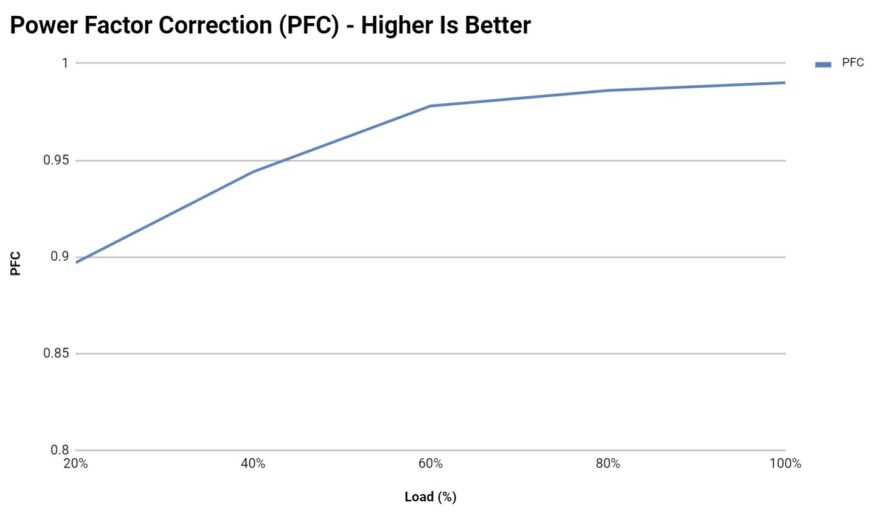Corsair HX1500i Platinum Power Supply Review
Mike Sanders / 2 years ago
Efficiency
Coming as an 80-Plus Platinum power supply, the Corsair HX1500i certainly sets the efficiency bar rather high (there is only one efficiency rating that goes higher than this). – So, with such lofty specifications, how does it actually stack up? Well, the short answer to that question is exceptionally well!
Throughout all of our testing, the Corsair HX1500i roughly averaged a 93-94% efficiency rating which not only comfortable met the 80-Plus Platinum standard but in many respects, borderline tip-toes on the highest ‘Titanium’ level.
Put simply, in terms of efficiency, the Corsair HX1500i is excellent!

PFC (Power Factor Correction)
The PFC results provided throughout our load testing of the Corsair HX1500i were some of the consistently best we’ve ever seen. As is often the case with PSUs in this test, the harder you ask it to work the better it does. Achieving a score only slightly below 0.9 at 20% load, however, is exceptionally impressive (usually we see and/or expect results around the 0.8-0.85 area).

Voltage Regulation
To accommodate the full 1500 watts of power output, which is borderline the limit of our tester, as noted in our methodology, we do have to simulate rails. With this in mind, it’s not overly surprising to see that the +12V results are a little inconsistent here and there (you’ll note that the figures provided do tend to jump about slightly with little consistency depending on the load output). In this regard though, what I’m trying to say is that this is more to do with our testing methodology than the performance of the power supply itself.
Even when this is taken into consideration, however, the results provided are still amazingly consistent resulting in an exceptionally low (and good) average deviancy. – Yes, the -12V rail does overvolt slightly, this is, however, very common for the vast majority of power supplies, and more notably, given the somewhat lack of importance this rail has on more modern PC systems. Put simply, the results are well within acceptable limits and there really isn’t anything to be either surprised or concerned about here.




















